Echeveria ‘Doris Taylor’, also known as Woolly Rose, is a unique succulent that looks great in any succulent garden or arrangement. Doris Taylor is actually a cross between Echeveria pulvinata and Echeveria setosa.
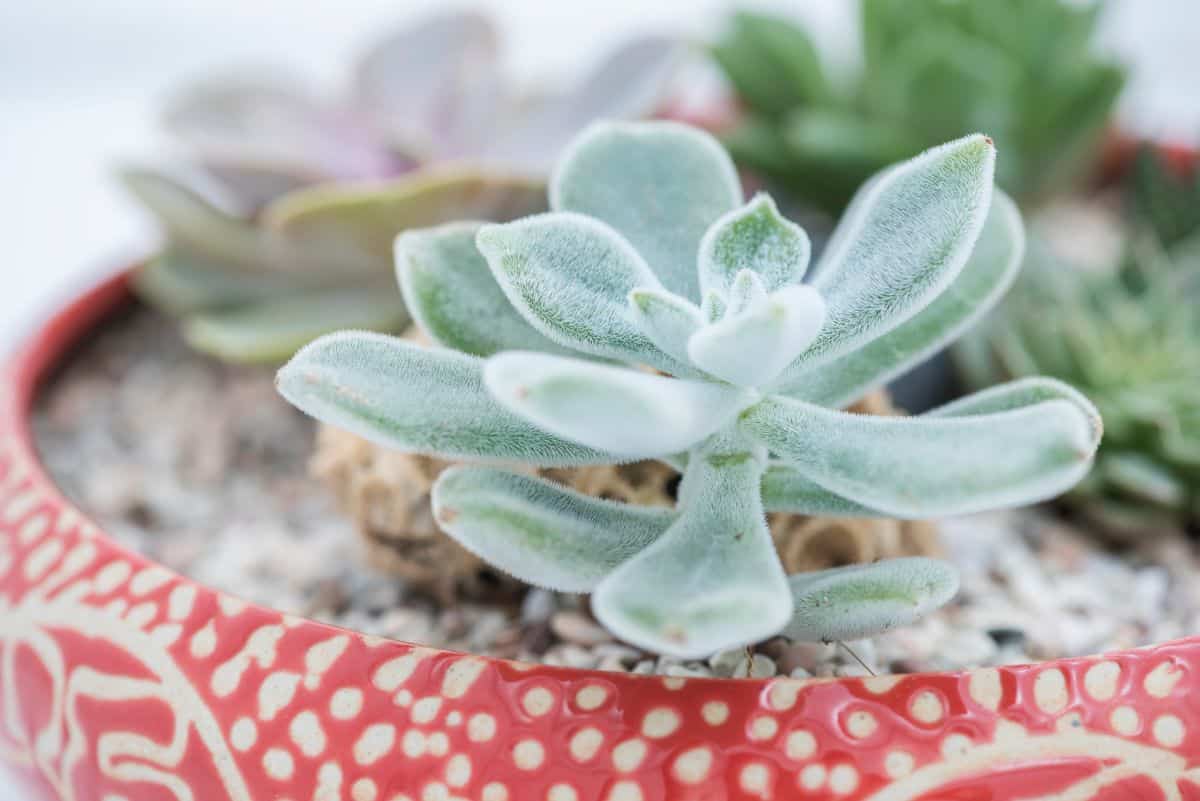
This unique succulent gets its name from its creator. The man responsible for Doris Taylor was Dr. W. Taylor, who named the plant after his beloved wife.
Jump to:
Echeveria ‘Doris Taylor’ Appearance
| Name: | Echeveria ‘Doris Taylor’ |
| Soil: | Well-drain soil |
| Blooming: | Between spring and fall |
| Light: | Bright light |
| Water: | When the soil is dry |
| Propagation: | Offsets, cutting, and seeds. |
Doris Taylor is a petite succulent that measures about 2 inches in height at maturity. It is a rosette-shaped succulent that can measure up to 6 inches in diameter.
As the name suggests, the fleshy leaves of Woolly Rose are covered with glistening silver hairs. This trait was inherited from one of the parent plants of Woolly Rose, Echeveria setosa.
The leaves themselves are pale green in color and can reach just over 3 inches in length and about an inch in width. When grown in bright light, the tips of the leaves can blush red.
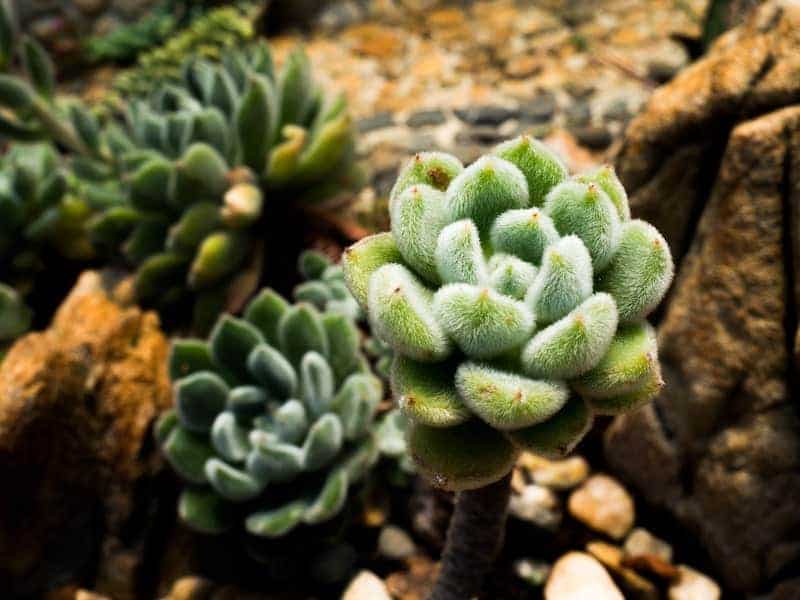
Buy it from:
When in bloom, Doris Taylor produces yellow flowers with shades of red. Flowers typically appear somewhere between spring and fall.
Cultivars
Echeveria ‘Doris Taylor’ cristata is the only other cultivar of Doris Taylor. It is the crested form, but it’s still recognizable by the fleshy leaves and fine silver hairs. The leaves, however, are much smaller and densely packed than the original.
As this is a crested form, the rosettes are not recognizable, and instead the leaves can be seen growing from the succulent’s crest. Despite this plant’s unique appearance, it requires the same level of care as the original Woolly Rose.
Caring for Echeveria ‘Doris Taylor’
As with most Echeveria, Doris Taylor is relatively easy to care for. Though it’s not always easy to find, it’s a great plant for beginner and experienced gardeners alike. It’s also a great option for use in projects such as fairy gardens, wreaths, and living walls.
Water
As with any succulent, Echeveria ‘Doris Taylor’ prefers infrequent watering. However, it’s not a succulent that can handle a long period of drought either. Ideally, you’ll find a perfect balance between allowing the soil to dry out between watering, but not allowing the soil to remain dry for a long time.
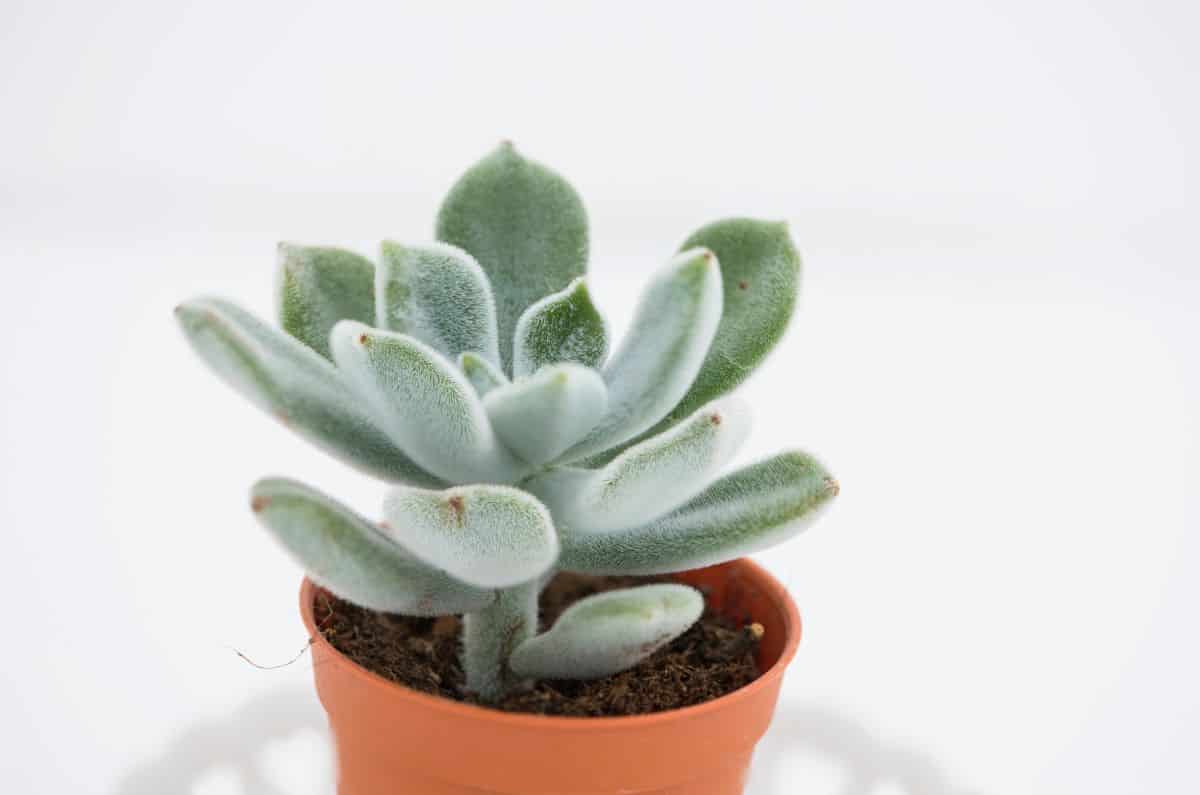
Additionally, it’s important to adjust your watering schedule to accommodate seasonal changes in temperature and humidity.
No products found.
During the hottest months of summer, you’ll likely find yourself watering your Echeveria more frequently than during the cool winter months. Moisture will evaporate more quickly from the soil in hot weather, especially if it’s dry.
Likewise, during periods of high humidity, it will take longer for soil to dry out, so you may need to adjust your schedule and water your succulents less frequently than you would in dryer seasons.
Of course, if you grow your Doris Taylor indoors, changes in temperature and humidity will likely be less severe than if you grow your succulents outside, so adjustments may need to be minor.
The most important aspect of watering Doris Taylor is to avoid excess moisture and standing water. Too much water will lead to root rot, which cannot be reversed and will likely result in the death of your plant.
Light
When grown indoors, Echeveria ‘Doris Taylor’ does best in bright light. An east, west, or even south-facing window is ideal. North facing windows are unlikely to be able to provide enough light for this succulent.
Without adequate light, Doris Taylor is likely to become stretched out or etiolated. Etiolation isn’t harmful to plants, but most gardeners find the look unappealing. Unfortunately, etiolation cannot be repaired.
The only solution to a stretched-out plant is to behead it and place the cutting in an area with better light.
However, grow lights are also a great solution for indoor spaces with inadequate light levels. If your Echeveria is beginning to etiolate, you may be able to prevent it from stretching out further by placing it under an indoor grow light.
When grown outdoors, Echeveria needs filtered light or partial sun. A little direct sunlight won’t hurt, so long as the plant is shaded during the hottest time of the afternoon.
Too much light can be as much of a problem for your Doris Taylor as too little light, especially if it’s being grown outdoors. Too much direct sunlight can result in sunburn.
Like etiolation, sunburn cannot be repaired. You’ll either need to live with your plant’s new appearance until the damaged areas are replaced by new growth or trim away the sunburned leaves.
To prevent sunburn, it’s important to give your succulent plenty of time to adapt to increased levels of light. Increase light amounts slowly over a period of several weeks to help your Echeveria get used to it without risking its health or appearance.
Temperature
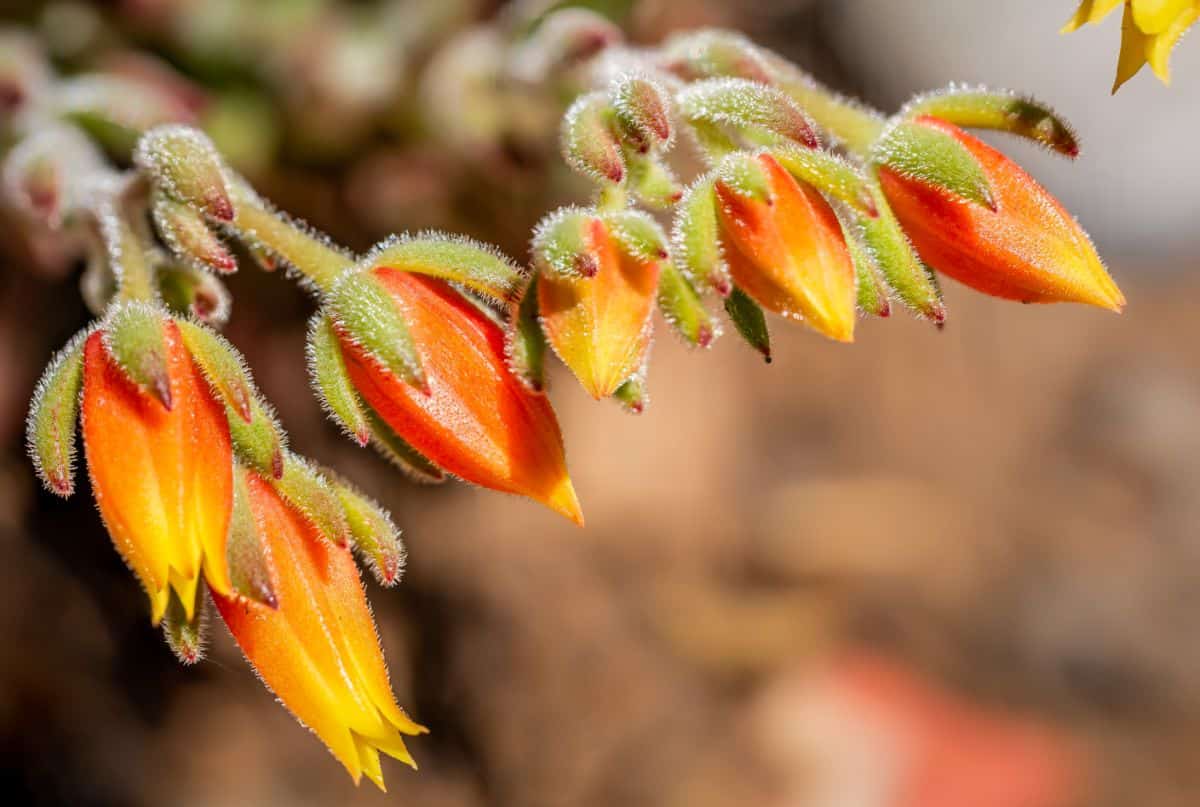
As with most Echeveria, Doris Taylor will not be able to tolerate a hard frost. These are plants native to a fairly warm climate, so they simply cannot endure long periods of time in freezing temperatures.
If you grow your Doris Taylor outdoors, consider bringing it inside during particularly cold weather or for the duration of winter.
Extreme heat can also potentially damage Doris Taylor, especially when combined with direct sunlight. As long as your plant is protected from the sun’s rays during the hottest parts of the day. You may also need to water your plant more frequently during a heatwave to help it cope.
Soil
Echeveria has the same soil requirements as many other species of succulent. They need a soil that provides quick drainage and plenty of airflow to their roots. This can be accomplished with any soil containing plenty of coarse sand, gravel, or perlite.
It’s best to avoid soils that may contain large amounts of water retaining matter such as clay or peat moss. Though these ingredients are fine in small amounts, too much can cause the soil to retain more water than your succulent can handle.
If you’re not mixing your own soil mixture, look for a soil intended for use with succulents and cacti. Most commercial cactus soil is adequate for Doris Taylor, though you can always adjust it by adding other ingredients if you so choose.
Container
While succulents such as Doris Taylor can technically be grown in any type of container, it’s worth noting the importance of proper drainage once again.
Choosing a container with a drainage hole will give your plant the best chance of survival. Your plant will be much more forgiving of the occasional overwatering incident if the excess moisture is able to drain away.
Propagating Echeveria ‘Doris Taylor’
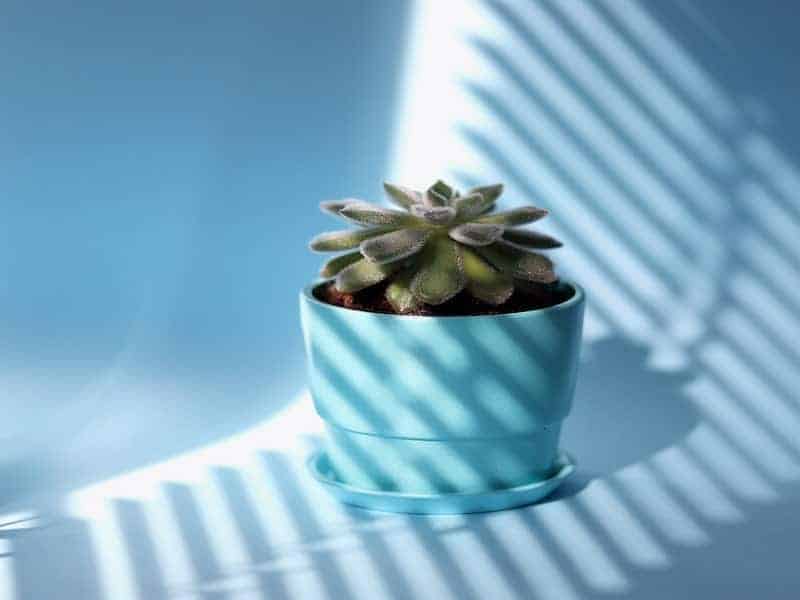
If you’re looking for a succulent that’s easy to propagate, look no further than Echeveria. Echeveria are notoriously easy to propagate, no matter what method you choose, and Doris Taylor is no different.
Offsets
Offset separation is the simplest and quickest method of offset propagation. Those tiny plants surrounding your Doris Taylor are the offsets or pups, and they can simply be separated from the mother plant and grown elsewhere.
This is an easy propagation method because the tiny plants already have existing root systems. All you have to do is separate them using your fingers or a clean and sharp knife.
Just be sure to handle the offsets gently to prevent any damage to their delicate little leaves or roots.
Once the offsets have been removed, simply give them a couple of days in the open air to callous before planting them in the container of your choice.
Cuttings
Another popular method of Echeveria propagation is with cuttings. Stem cuttings can be a great way to save that etiolated or sunburned plant and leaf cuttings can make use of any leaves that are knocked off during repotting.
Be sure to take your cuttings using a clean, sharp knife to prevent damage to the plants. Once you’ve collected your cuttings, you’ll need to give them a few days to callous to help prevent infection by fungus or bacteria.
After the cuttings have calloused, they’re ready to be placed on top of the soil in a new container. With any luck, you’ll see tiny leaves or roots sprouting from your cuttings within a few weeks.
Once the roots appear, you can begin watering and treating your tiny Doris Taylor just as you would a mature plant.
Seeds
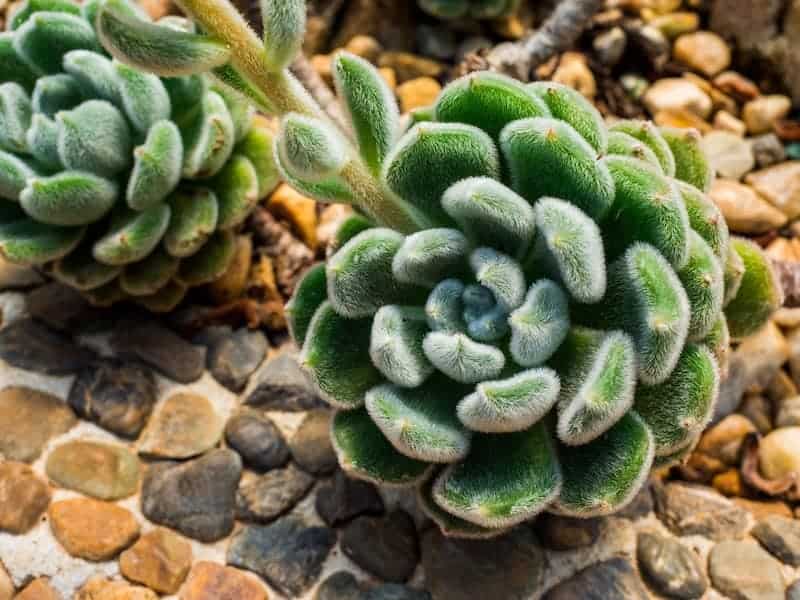
Succulents like Echeveria tend to grow quite slowly, which means that most gardeners opt for quicker methods of propagation such as cuttings or offsets. However, they are a relatively simple plant to grow from seeds, so long as you are patient.
Many gardeners recommend soaking the seeds prior to planting to give them the best chance of success. However, this step is optional.
To grow Doris Taylor from seed, sow the seeds in a well-draining and moist soil and cover with a plastic sheet or lid. The covering will help preserve the humidity, but it’s important to make sure the soil is just moist and not overly wet to prevent the seeds from rotting.
Soon, you should begin to see tiny Echeveria seedlings sprouting from the soil. At this point, the cover can be removed, and you can allow the soil to dry out a bit. As the seedlings grow larger, you can begin treating them more like a mature plant and eventually repot them into their own containers.


